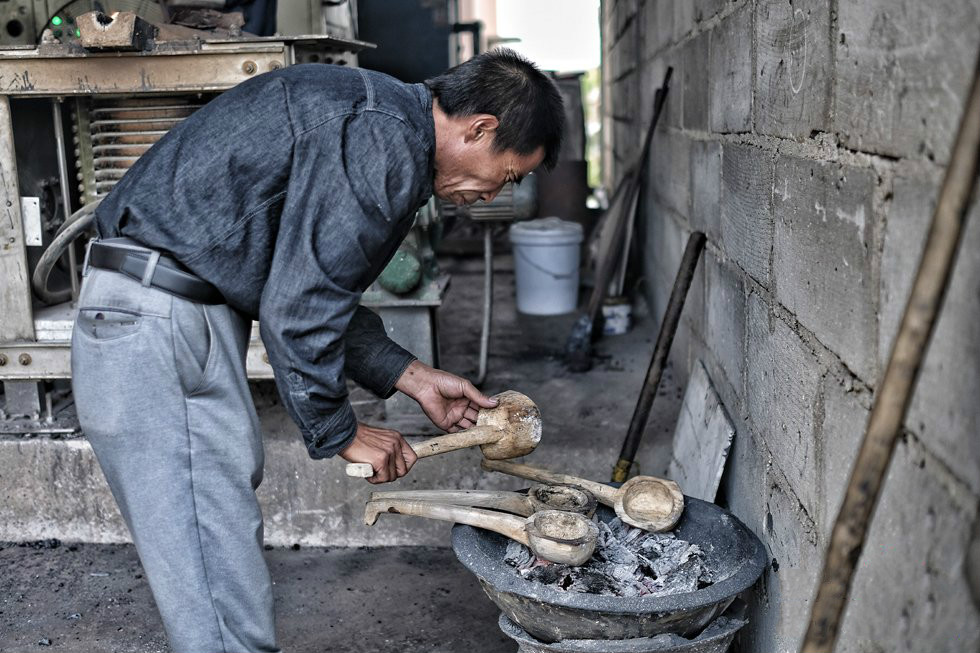A history of “dashuhua” performance in North China

A worker carries out a routine inspection to make sure the willow wood spoons are in good condition, so performers won’t get burnt by using the spoons during the show.
The small, historical town of Nuanquan, in Yuxian County, Hebei Province, lies just 200 kilometers west of Beijing. It is the home of the famous “dashuhua” spark performance.
Historical records indicate that Nuanquan Town was built under the reign of Emperor Jiajing in the Ming Dynasty. In the past, the town fortresses had both residential and defense functions, so the foundry industry was well developed here.
When local blacksmiths forged iron, they were inspired by flashing sparks and collected the scrap iron to make liquid iron. When they sprayed the molten iron on the city walls, the hot liquid metal—with temperatures of over a thousand degrees Celsius—made contact with the cold brick and an arc of sparks rained down over the blacksmith like rainfall. Even today the walls are full of stains the liquid iron left behind, which are historic evidence of local people’s fondness for “dashuhua.”
In ancient times, the rich people set off fireworks during every festival in the town. But blacksmiths, who lived at the bottom of society, could only receive the happiness through forging iron to celebrate every festival. So these “poor man’s fireworks” attracted more and more common people to participate.
When performers spray the molten iron fireworks, they wear straw hats and sheepskin jackets. Because wool doesn’t burn when it catches fire, it protects them. To spurt the liquid iron, performers cannot use iron or other metallic spoons because metallic spoons can melt, and the spoon handle transfers heat very rapidly. But performers soak the willow wood spoons in water for several days, and then they can use them for performances without worrying about getting burnt.
In recent years, the art of the molten iron fireworks has spread out of this small town, coming to big cities and being shown on TV screens. The local cultural department indicates that they will do their best to bring this art to the world stage.
